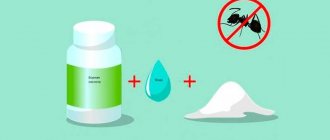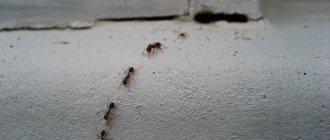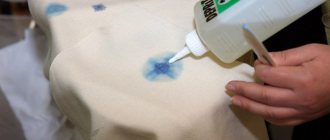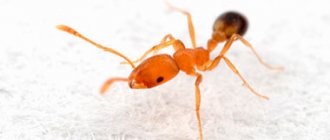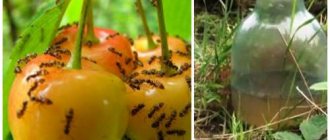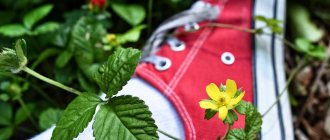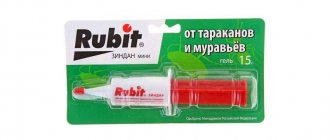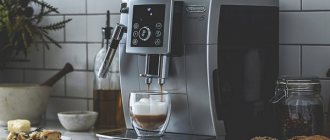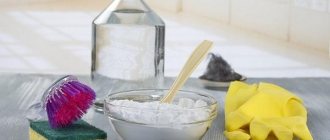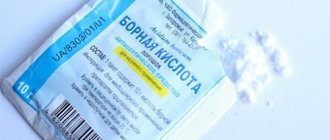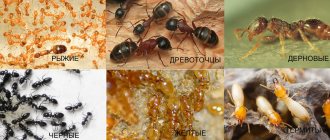Boric acid for ants is the most popular means for controlling pests at home and in the garden. The use of this substance is quite safe for children and animals. But you should also not leave the drug unattended in an area where a child or pet is walking. Given the relatively low toxicity of the drug, it can cause poisoning: the lethal dose for children is 5 g, for adults – 20 g.
The most popular acid in the fight against house and garden ants. There are many recipes for poisonous baits using this substance.
What is the danger of ants appearing in a house or area?
It is difficult to say whether these insects should be considered pests or beneficial inhabitants of gardens and vegetable gardens. It may turn out that the benefits of ants in the countryside outweigh the harm they cause. But in the house they definitely become pests.
In search of food, working individuals climb everywhere: from a trash can to a loaf of bread sealed in plastic. Where there is no hole, they will gnaw it. Moving from garbage to food, ants carry pathogenic bacteria on their paws. Since foragers run not only around the house, but also along the street, they can introduce worm eggs onto prepared food.
Controlling ants indoors is truly essential. But the use of strong insecticides can be dangerous for the inhabitants of the house, so “folk” remedies are often used to kill pests. Often they are completely non-toxic: aromatic oils. But they can also be slightly toxic, like drugs with boron.
Ants occupying bread are unlikely to cause positive emotions
Prevention
Just because there are no ants in your house or you have successfully dealt with them, this does not mean that they will not try to come back again. Moreover, they can always get into the apartment from your neighbors, who may not fight insects at all.
To prevent the appearance of these annoying insects, always keep your kitchen perfectly clean - do not allow crumbs to appear on the tables, wipe the floors daily with a damp cloth, clean the tiles and pots from traces of grease, and do not leave a filled trash can for tomorrow. If there is food left in your pets' bowl, change it after it has sat untouched for one day. Firstly, your pet is unlikely to touch yesterday’s food, and secondly, this is an ideal complementary food for ants - tasty and easily accessible.
If you like to feed animals from the table, throwing food directly on the floor, after eating, wipe the area with a rag to get rid of crumbs and greasy marks that remain on the floor surface.
All jars in the kitchen in which you store cereals, sugar, and spices must be tightly closed. Always keep your home clean.
What is boric acid?
A substance with a very wide range of applications. It is naturally found in the mineral sassolina and mineral water. It is also obtained chemically. The drug obtained through industrial production is chemically pure. This is what you can buy in pharmacies. Acid is used:
- in various types of industry: from food to foundry and chemical;
- at home;
- as fertilizer;
- in nuclear energy.
At home, the drug is used not only as a poison for insects, but also as a disinfectant. It was abandoned in medical institutions due to its too weak effect on microorganisms. To destroy microbes, the concentration of the solution must be much higher than when using potassium permanganate or carbolic acid. But due to the lack of odor, the substance is sometimes continued to be used to disinfect household premises or kill insects.
Important! Borax and boric acid are different substances, although both contain boron. Boron is a poison for ants, but it is not found in its pure form in household chemicals.
Due to its ability to accumulate, the drug was prohibited for use as an aseptic agent for pregnant women and infants. Most often, this product is used in the home to get rid of ants and cockroaches, and care must be taken to ensure that pets do not eat the bait.
How does boric acid work on ants?
For insects it is a poison of intestinal contact action. Although how realistic it is to get rid of ants using boric acid is a controversial issue. In theory, the insect eats the poisoned bait and dies. For a single copy, this is an ideal option. But an ant colony can number tens of thousands of individuals. And the question is not even the number of foragers, although this is important.
High fertility – protection of all species belonging to the family Formicidae from natural enemies. The female easily restores the depleted number of foragers. To poison a colony of ants with boric acid, it will have to be used in bait constantly throughout the warm season. It is necessary for the poison to “reach” the fertile female. At the dacha, everything is simpler: the poison can be laid out right near the entrance to the anthill. Then there is a greater chance that the foragers will take the bait inside. Due to the long period of action, the effect of using the poison can only be felt the next year.
Baits should be placed in places where ants accumulate and on their routes of movement.
What boric acid is used to poison ants?
The drug is poorly soluble in water. Therefore, an aqueous solution is not produced. You can usually find two forms of the substance on sale: powder and boric alcohol. The basis of the latter is 70% ethanol. The alcohol solution can be in a concentration of 0.5 to 5%. It is used as an antipruritic and aseptic agent, and also as ear drops.
It is theoretically possible to use an alcohol solution of boric acid against ants, since ethanol evaporates quickly. But we must remember that ethyl alcohol is one of the folk remedies that repel insects. It is more convenient to use boric acid in powder form against ants. You can be sure that the smell of alcohol will not scare away insects from the bait.
What ants are boric acid used against?
Most ant species are omnivores. This means that they eat whatever food they can find. Boron preparations can be used against each of these species. But in the same way, most ants have almost no contact with people. There are usually 2 types of pests against which poison must be used: red domestic pests and black garden pests.
Redheads
There may be 2 types of small brown ants living in the house. But one of them in the north can only live at home. This is an ant that has already set the pharaohs on edge. Synonyms for the name are ship and home. Scientists claim that the homeland of these insects is North Africa and the adjacent Mediterranean. Thanks to trade communications and a tendency to live near the people of the pharaohs, the ant spread throughout the planet. But in the northern regions it cannot live in nature.
In Russia, the ship ant settles only in dwellings. This species builds diffuse nests: several centers with females, connected by passages. The size of individuals is 2-4 mm. This allows them to penetrate into the narrowest crevices. It is very difficult to remove pests using local means such as boron preparations. It is necessary to disinfest the entire structure at once.
If a pharaoh ant has settled in an apartment building, the fight against it is almost hopeless, or you will have to “feed” the insects for a long time in the hope that all the females will die almost at the same time
You can prepare a sweet syrup with boric acid for pharaoh ants, but it is unlikely that you can get rid of them this way.
Comment! Red wood ants are not a synanthropic species and do not live in houses. They can only be found in the forest.
There is also another species of red ant in southern European regions. They successfully combine the functions of home and garden pests. This species can be found on trees where they breed aphids. They also often enter homes. Before the introduction of the pharaoh ant, they were the main parasites in the house.
These red ants differ from the ship ants by their shorter body, the ability to move quickly and the pointed rear tip of the abdomen. The sizes of the two types of pests are approximately the same. But Europeans do not build diffuse anthills; it is easier to get rid of them.
Southern European small ants have successfully driven out the large black lasius from gardens
Garden black
The most common species in central Russia. The scientific name is black lasius. Gardeners often call it simply garden black. The color of working individuals is from dark brown to black. The size of foragers is 3-5 mm, females – up to 11 mm. They move slowly.
The main occupation is “cattle breeding”. Because of this, they can only end up in the house by accident if they are brought from the dacha along with plants. They prefer gardens where aphids are bred on trees for honeydew. An anthill is a small mound next to a hole leading deep into the soil. They can live in rotten stumps and tree trunks.
Black lasius often lives with its “ladies” on a thuja branch
Chemicals
A huge number of different pesticides are sold that do an excellent job of killing ants: long-acting gels, powders, and crayons are common. Keep in mind that they are recommended to be used when it is not possible to get rid of insects using folk remedies that are safer for plants . To properly deal with ants, familiarize yourself with the distinctive features of toxic compounds:
| Drug name | Active ingredient | Operating principle | Characteristics of the drug | Application | Price |
| "Thunder-2" (10 g) | Diazinon. | Destroys ant colonies. Adults eat the product, feed it to the larvae, poison the body: insects experience convulsions, paralysis, and suffocation. | It has a pleasant aroma for ants. Effectively fights soil flies, fungus gnats, and ants. Used in garden plots, greenhouses, apartments. | The top layer of the anthill (2-3 cm) is removed, the poison is poured out (if the nest is large, use 2 packages), a layer of earth is poured in, and a sheet of plywood is placed. | 11 rub. |
| "Muracid" (10 ml) | Diazinon. | Contact intestinal poison. Adults and larvae die after a day: spasmodic pain and paralysis occur. | Safe for people, animals, plants. The effect of the poison lasts 2-3 months, so it can be used 1-2 times per season. | 1 ampoule of 5 ml is mixed with 10 liters of water. The solution is used to treat areas where pests accumulate. | 51 rub. |
| "Aardeater" (1 ml) | Diazinon. | Noticeable effect after 3 days. Contact-intestinal effect: causes paralysis, leads to rapid death. | Release form: ampoules. Effectively fights against different types of insects: mole cricket, wireworm, weevil, fruit moth, cabbage fly, ants. | For processing 5 sq. m use a solution of 1 ml of the drug, 10 liters of water. Carry out the procedure in the morning or evening: remove the top layer of the nest, pour in the solution. | 16 rub. |
| "Ant" (10 g) | Diazinon. | Poisons the uterus. | Granular powder. Suitable for garden plots and residential premises. Protects vegetable and flower crops, fruit trees, berry bushes, lawn grass. | Buried inside the nest to a depth of 2-3 cm. Consumption rate: 30 g per 10 square meters. m. | 14 rub. |
| "Delicia" (500 g) | Chlorpyrifos. | Rapid poisoning of adults and larvae. | Universal granular powder. Helps fight ants, lice, crickets, larvae, ticks, cockroaches, fleas. | Nests are falling down. | 665 rub. |
| "Raid" (300 ml) | Butane, propane, isobutylene, solvents, fragrance. | Remains active for 2-4 weeks. Nerve-paralytic effect: the poison enters the body, penetrates the cover, and destroys the pest. | The aerosol helps fight ants, bedbugs, fleas, cockroaches, moths, mosquitoes, flies, mosquitoes, and skin beetles. Safe for people. It has a pleasant lavender scent. | Shake the container well before use. The product is sprayed inside the greenhouse, where there are pests, from a distance of 20-30 cm, for about 2 seconds: droplets should not be allowed to form on surfaces. | 294 rub. |
| "Karbofos" (30 g) | Malathion. | It is an enteric contact agent: if it comes into contact with or inside an insect, it has a detrimental effect. | It has an unpleasant odor that helps fight pests, which quickly disappears. Can be used in garden plots to kill bedbugs, red and black ants, mites, aphids, moths, moths, mosquitoes, lice, and bees. | Can be used up to 2 times per summer. Take 10 liters of water and add 60 g of dry powder. Solution consumption: 1-2 l per 10 sq. m. | 30 RUR |
Methods of using boric acid against ants
It is most advisable to use acid in powder form. Some gardeners use boric alcohol. But, in addition to the unpleasant smell of alcohol for ants, the concentration of the toxic agent is too low. The active ingredient in acid is boron. It is contained in powder 17%. In an alcohol solution, the boron content is negligible.
It is most convenient to use powder. If necessary, it can be diluted in liquid bait or made “dry”. Almost all recipes for poison with boric acid against ants in the garden involve diluting the powder in a sweet liquid. This is justified, given that black lasius prefer to feed on carbohydrates. In the house against omnivorous house ants, it is more advisable to use “dry” baits based on yolk, minced meat or potatoes. This is especially important if pharaoh ants have settled.
Attention! If you have pets, all baits without exception must be placed in places inaccessible to animals.
The foragers will take the “dry” poison to the nest, where they will poison the female. When eating liquid bait, only working individuals will die. The latter is convenient when you only need to control the population in the garden, but there is no goal to destroy the anthill.
Why are ants bad?
Many people are perplexed - what is wrong with ants, what harm can they cause to a person if they do not attack him. But it's not that simple. If these insects occupy the house, you can say goodbye to your supplies of sugar, honey, jam, flour and cereals. They will eat some, drag something back to their nest, and in return leave a lot of excrement and corpses (ants often stick and drown in sweet liquids).
In the food reserves that ants store for their brood, pathogenic bacteria and fungi often develop. And these insects also run all over the house, including the toilet and garbage can. From there they can bring infections or parasite eggs into the kitchen. Pets are also unlikely to be happy with their new roommates, especially since ants bite, which is painful and fraught with an allergic reaction.
If ants have entered an apartment, they can be found almost everywhere
Ants in the garden behave no better: their vast homes can be found in any garden bed, in a flower garden and under trees. This harms plants and their roots. The fruits of soft, sweet berries, such as strawberries and wild strawberries, are also at risk: ants like their juice.
Ants are ready to go to great lengths to eat sweet strawberries.
Some species of garden ants breed aphids. And it spoils plants and is nutritious food for other insect pests.
Ants breed aphids, which harm plants.
How to dilute boric acid from ants
There are no special tricks in preparing bait. It is believed that this substance is poorly soluble in water, so alcohol solutions are used in pharmacology. But in everyday life, the powder is “dissolved” in water. Better in hot. There is no particular problem with this. “Dry” baits do not involve dissolving crystals at all. Therefore, to dilute boric acid in water, it is enough to pour the contents of the package into water at a temperature of about 60 ° C and stir.
How to make boric acid with sugar from ants
Liquid ant repellent based on sugar and boric acid is very popular among gardeners due to its availability. To prepare the bait, just take 2 tbsp. l. sugar and a 10-gram package of powdered acid. The solution will require a glass of hot water. Sugar and powder are poured into it. Stir until the crystals are completely dissolved. The finished product is poured into small containers and placed in the right places.
Recipe for boric acid with yolk from ants
At home, it is popular to use poisoned bait with boric acid and egg against ants. To prepare it you will need 3 hard-boiled yolks and ½ tsp. acids. The yolks are ground, mixed with powder and the bait is placed in the path of the ants.
Comment! To prevent the yolk from crumbling into dust and drying out longer, you can add glycerin to the mixture and form balls from the bait.
Poison for ants from boric acid with honey or jam
If you have liquid jam or honey, no water is required. Just add a packet of powder to ½ cup of sweet, thick liquid and stir. Then pour the mixture into a low bowl and place it near the anthill in the garden. To get rid of insects in the house, bait is poured into lids from cans and bottles and placed on ant paths.
Ant bait made from boric acid with minced meat
When making meat bait from ants, the proportion of boric acid to minced meat is 1:4. Mix everything well and lay it out on the ant paths. This bait can be used to kill pests in residential areas. It must be changed every 2 days, as the meat either dries out or goes rotten. If there are pets in the house, this type of poison should not be used.
Ant repellent made from boric acid and yeast
It is not entirely clear why yeast is needed in the recipe for such baits in the presence of jam or sugar. But there are instructions:
- pour 1 tbsp. l. yeast 3 tbsp. l. warm water;
- add 1 tbsp. l. jam and 15-20 g of boric acid;
- mix everything well, pour a little into shallow containers and place next to the ant paths.
The container should be large enough in diameter so that the fermented mass does not overflow.
Recipe for ant bait with boric acid and glycerin
Glycerin is mixed as one of the ingredients into any of the baits to slow down drying. Its addition is relevant for poison based on egg yolk, potatoes or meat. Can also be added to liquid baits.
One of the recipes:
- 2 tbsp. l. water and glycerin;
- 3 tbsp. l. Sahara;
- 2 tsp. honey;
- 1 tsp acid.
Mix all ingredients and heat over low heat until the sugar is completely dissolved. Pour into shallow containers. Place them next to the ants.
Pour the syrup into a shallow bowl
Ant trap recipe with boric acid, yolk and potatoes
Potato balls with boric acid added to kill ants are one of the most common traps. You can use only potatoes as the basis for this bait, but it is more effective to make a poison with several ingredients:
- potato;
- egg yolk;
- vegetable oil/butter or glycerin.
To make bait, take 2 tbsp. l. mashed potatoes and 3 yolks. Everything is kneaded into a homogeneous mass. Add 1 tbsp. l. sugar and a packet of acid. Stir. Pour in 1 tbsp. l. vegetable or melted butter. Knead everything well and make balls.
Oil is needed to prevent the bait from drying out. The advantage of cream is that it itself can attract ants with its smell. But if necessary, the oil can be replaced with glycerin.
Potato balls are laid out near ant paths and habitats
The pestilence of red ants
Unlike black ants, red ants are united. One colony can have up to 3-5 nests. If one of the anthills is endangered or destroyed, then this nest will soon be populated by relatives and quickly restored.
At home or in an apartment, these are the insects’ favorite places:
- building foundation;
- behind the wallpaper;
- in the pantry;
- behind the stove;
- in a warehouse;
- behind the electric heater.
R
The red species of ants is active throughout the year. As the weather cools, they require moist, warm conditions and darkness. That is why they move to home buildings for the winter.
Inside the living quarters the following are used as food:
- food products;
- home water supply system;
- garbage;
- electricity supply;
- leather items;
- natural fabrics;
- paper and wood.
People living in a house or apartment, including animals, often become victims of red ant bites.
It is very difficult to get rid of insects, as they can quickly adapt to unfavorable living conditions.
Dry ant traps with boric acid for the garden
Dry traps are used only in gardens and vegetable gardens. Their main disadvantage is the need to frequently repeat the procedure. The main ingredients of such baits are dust-like products: flour, soda or ash. On the street, the poison is scattered near an anthill, but in the house dry dust will scatter everywhere. Since the traps contain a preparation containing boron, such “house dust” can be hazardous to health.
How to kill ants with boric acid and cornmeal
Maize attracts ants by its smell alone. But if they gnaw holes in the grains, then they can eat the flour in its ready-made form. How dangerous such a “dish” is for ants is a controversial issue. Theoretically, the flour should swell in the insect's intestines and kill it.
In practice, it is better to play it safe. The chances of death from overeating are much less than 50%. But you can guarantee that after running through the flour, the ant will stain the bristles and will be forced to clean them. When using a mixture of cornmeal and acid, the latter will probably also end up on the insect's body. When cleansing, it will inevitably swallow a dose of poison.
10 g of acid is added to 100 g of corn flour and the mixture is scattered near the anthill. The procedure must be repeated at least once every 2 days: the flour swells from dew and loses its “killer” properties.
Comment! Rain can completely wash away the trap.
Ant bait with boric acid, powdered sugar and rice flour
Almost an analogue of the previous recipe, but instead of corn flour they use rice flour. Powdered sugar is also added to the mixture. It is very hygroscopic and easily adheres to the chitin of insects. As long as the powder is dry, the ants can carry it into the nest. Sometimes baking soda is added here. The use of the mixture is the same as in the previous recipe.
An ant caught in the “dust” will be forced to cleanse its body and will inevitably swallow poison
How to poison ants with boric acid and soda
A fairly simple way to prepare poison for garden ants. Mix 100 g of baking soda with a packet of acid. Sprinkle the powder on the anthill. Water to ensure better contact of chemicals with the soil.
Comment! Baking soda is an antidote for boric acid poisoning.
A mixture of boric acid and ant ash
Similar to the previous recipe, but wood ash is used as an alkali. For 1 kg of ash you will need 30 g of acid. The application is the same as in the previous method. You don’t have to water it, but wait for the rain and sprinkle the mixture directly in front of it.
Preventive measures
It is better to try in advance to prevent the appearance of ants in the greenhouse. The following are used as preventive measures:
- Regular loosening. Ants do not like it when their nests are disturbed and their passages are filled up; the insects will go elsewhere.
- Use of fertilizers. Such agents as superphosphate and ammonium nitrate are destructive for ants.
- Maintaining cleanliness in the greenhouse. It is necessary to promptly remove garbage and rubbish from the greenhouse structure. Boards, roofing felt, rubber, and slate should not be stored there.
- Digging the soil in spring and autumn. You need to dig the ground deeply, additionally adding lime, ash or baking soda to the soil.
- Treating the beds before planting with a special solution. It is prepared from 30 g of vegetable oil, 5 g of soda and 1 liter of water. The resulting mixture is evenly sprayed onto the soil in the greenhouse.
- To prevent ants from approaching the greenhouse structure, you can plant aromatic plants nearby - lemon balm, marigold, rosemary, lavender.
Security measures
Any substance with boron, although weak, is poisonous. When using it, you must observe the following precautions:
- store in a place inaccessible to children;
- do not use where the bait can be swallowed by animals;
- If powder gets into your eyes, rinse them with cold water;
- Make sure that the drug does not come into contact with food.
Poisoning in humans can only occur with targeted use of the drug: systematically little by little or one-time in a large dose.
Attention! Boric acid has a cumulative effect: with prolonged ingestion, it can cause poisoning.
Symptoms depend on how the acid enters the body.
If it comes into contact with the skin, the substance can cause eczema, detachment of the epidermis and complete or partial hair loss. In case of poisoning through the gastrointestinal tract, the symptoms are varied:
- nausea;
- pain in the stomach;
- vomit;
- tachycardia;
- drop in blood pressure;
- convulsions;
- psychomotor agitation;
- anemia;
- disruption of brain function;
- others.
There is no specific treatment. Washing the stomach and mucous membranes with a 4% solution of baking soda is indicated.
Is boron powder dangerous for people?
This is the question that owners of houses and apartments ask themselves when they find ants crawling in their homes.
Boric acid is not classified as a toxic substance and is recommended for use in residential areas to kill pests.
But when treating problem areas in the house, you must take precautions.
If even a minimal amount of the drug enters the child’s body, an allergy will occur. Here, caring for their inquisitive children falls on the shoulders of parents. The amount of acid used to prepare bait is small, so there is no harm to the body.
Important! Animals and small children should not have access to the drug and prepared baits.
But when working with the substance, you must wear rubber gloves. Prepared baits should be placed on disposable dishes, which should then be thrown away. After all work, hands should be washed with running water and soap.
